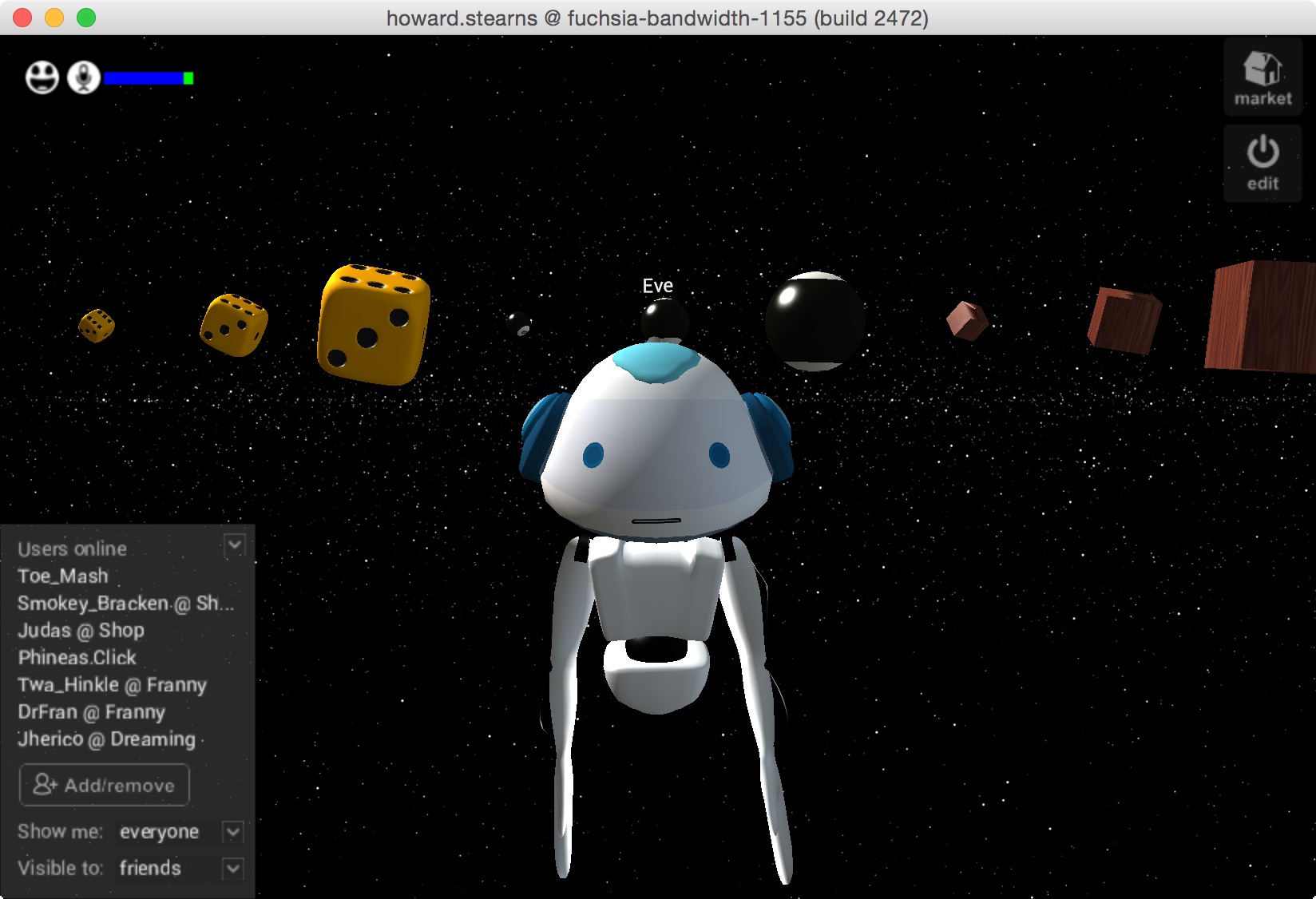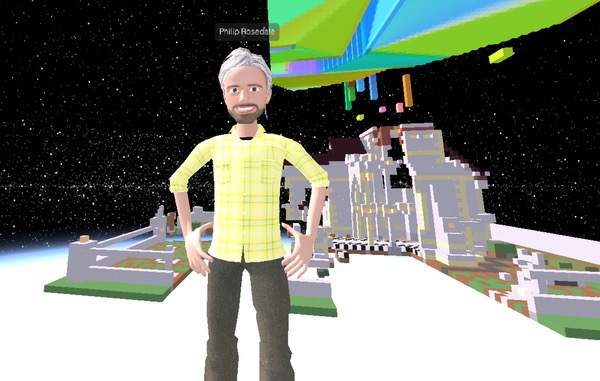 We had our weekly company meeting in HighFidelity today, just like we always do. For a while now, we’ve all been using Oculus VR headsets and trackers for our hands, and we now have avatars that look like like us. We have good multi-user physics and whole-body tracking-animation for our avatars.
We had our weekly company meeting in HighFidelity today, just like we always do. For a while now, we’ve all been using Oculus VR headsets and trackers for our hands, and we now have avatars that look like like us. We have good multi-user physics and whole-body tracking-animation for our avatars.
Today one of the guys showed off his recurve bow. As long as you hold it, it re-arms with arrows. Pull the string back with your physical hands, aim and let go, and the arrow flies. It’s basic fun with weaponry. People took turns playing with it.
But quickly people started saying, “Oh, shoot me between the eyes!” (including our CEO). It’s pretty cool to see the arrow coming right for you. Can’t do that IRL! (In Real Life.)
But I never said this. Instead, I stood among the circle of avatars in front of the shooter, and kind of stared him down. Without thinking, I conveyed, “Come at me, bro”, but with nothing so obvious as arms wide or a Neo-like “come on” finger-wave. My avatar could do that with just a stretch of my physical arm or squeeze of my hand, but I didn’t gesture or say a word. Our team is pretty competitive, but we’re not the kind of folks who would shoot the person in front of us without being invited. We need to be invited. But multiple shooters did shoot me. Non-verbal communication works!









